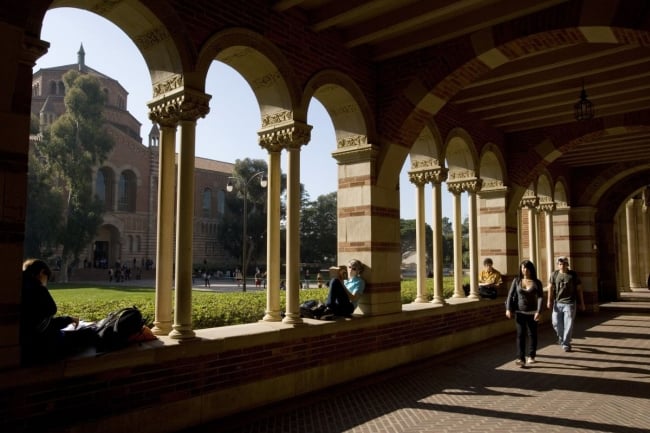You have /5 articles left.
Sign up for a free account or log in.

UCLA
Students from underrepresented racial and ethnic groups comprise 43 percent of admitted California freshmen at University of California campuses this year, the highest proportion of an incoming undergraduate class and the greatest number in UC history.
The number of underrepresented minority students increased from 33,225 to 36,462, up from 42 percent last year, but the campuses admitted many more Californians than in the past. Last year, it admitted 79,953 Californians; this year, it admitted 84,223 students from the state.
Black enrollment among freshmen stayed at 5 percent of the total, but the number increased from 3,987 to 4,608. The number of Latinx students grew from 36 percent to 37 percent, from 28,662 to 31,220.
For the second year in a row, Latinx students are the largest group of students in the system. Asian Americans are next at 34 percent. White students make up 20 percent of the system. (According to the Census Bureau, the Black population of California is 6.5 percent, Latinx is 39.4 percent, Asian 15.5 percent and white, non-Hispanic is 36.5 percent.)
This was also the first class admitted without required SAT or ACT scores, which the university's Board of Regents voted to abandon last year.
Some critics of that move predicted that it would lead to a massive shift in admitted students from Asian and white to Black and Latinx students. (California public universities are barred by the state constitution from considering race in admissions.)
In fact it led to small declines for white and Asian applicants who were admitted. Asian American admits fell from 35 percent to 34 percent, and white admittees fell from 21 percent to 20 percent. But the numbers of students admitted increased -- for Asian Americans from 27,771 to 28,402 and for white applicants from 16,438 to 17,024.
The increases for California freshmen were not evident at Berkeley and UCLA, but were evident at UC Davis (which gained about 2,000 students), UC Merced (which gained about 1,500 students) and UC Riverside (which gained about 1,000).
“These remarkable numbers are a testament to the hard work and resiliency of students and their families across California,” said UC president Michael V. Drake. “I am particularly heartened by the social and economic diversity of those offered a place at UC. Fall will be an exciting time on our campuses.”
Over all, applications to UC increased 13 percent, to 128,266.
Much of the interest in UC numbers concerns Berkeley and UCLA.
“We have admitted a class almost identical to the record-breaking class of last year,” said Olufemi Ogundele, UC Berkeley associate vice chancellor of enrollment management and dean of undergraduate admissions. “Faced with a pandemic and a 28 percent increase in freshman applications, we remained focused on our values of access, excellence and diversity. We have a lot to be proud of.”
The university made more offers to Black, Latinx and Native American students.
The average grade point average of all admitted freshmen (3.7 unweighted and 4.12 weighted) was "comparable to that of prior admitted classes," the Berkeley press release said.
UCLA also pointed to gains in the admission of Black and Latinx students.
Youlonda Copeland-Morgan, UCLA’s vice provost for enrollment management, said, "Our outreach and recruitment partnerships with underserved high schools and community-based organizations have borne fruit. In addition, the removal of standardized testing encouraged many more high-achieving students from underrepresented backgrounds to apply to UCLA."
The University of California is also notable for admitting many students from community colleges -- many more than most private colleges or competitive publics do.
This year, the university also admitted the largest-ever class of California Community Colleges transfer students, notching up to 28,453 from 28,074, a year-over-year increase of 1.35 percent. The vast majority of these transfer students are California residents (25,700). And more than half (53 percent) will be the first in their family to earn a four-year college degree.




